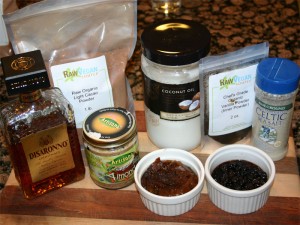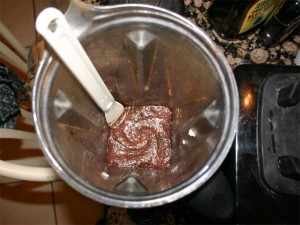Not sure why it is, but there have been a number of people that have come into my life carrying the vibration of the diagnoses of cancer. Its eye opening to me; for the attachment that people have to that particular diagnoses seems to be extremely strong. It saddens me, for something so simple gets ‘treated’ is such an awful way by our current medical system. I feel it’s time for a change.
So, I will state this up front – I am a firm believer that killing the body is a path that leads to death; not life. I am willing to bet that radiation treatment will be found to be barbaric and inhuman in the near future. The treatment for cancer is one of learning about light and life. By incorporating light, and the understanding that comes with it, the curse of cancer will be broken and the power of life will be restored and abundant! Part of breaking this ‘curse’ is through understanding.
My studies have lead me through many different avenuies, but the truth that I’ve found all comes down to this very simple statement that I found on the ASH website (here).
The prime cause of cancer is the replacement of the respiration of oxygen in normal body cells by a fermentation of sugar.
The drive that a person has to stay alive even in the worst of situations is so strong that this driving force permeates every cell of the body. Cells don’t want to die. There exist to serve and do whatever they can to provide that service. Even when we build an environment that deprives the cells of oxygen, they want to live so bad that they’ll revert to a process by which they will use fermentation to generate energy!
I’d like to bring in nearly the entire article from the Advanced Scientific health website for I believe it’s so important that it should be read and understood by everyone. Here it is there article The Basics of Cancer.
“Acidosis” is the scientific term for a body that has a pH below 7.0. In this state, the body is deprived of oxygen causing one to be more susceptible to colds, flus and other diseases/infections. This state also contributes to accelerated aging.
Our modern lives give us ample opportunity to become acidic. Commonly-consumed acid-forming foods and beverages include meat, dairy products, sugar, coffee and alcohol. Environmental exposure to solvents, herbicides, pesticides and other chemical toxins boost our tendency to become acidic.
Acidosis is the cause of America’s #2 killer-cancer. In order to understand the basics of cancer, we must first understand the acid/alkaline balance (see page 4). Understanding the acid/alkaline balance, the following summary makes perfect sense: The prime cause of cancer is the replacement of the respiration of oxygen in normal body cells by a fermentation of sugar.
Over 75 years ago, Dr. Otto Warburg was awarded two Nobel prizes for demonstrating that cancer results when weakened cell respiration occurs due to lack of oxygen at the cellular level. According to Warburg, damaged cell respiration causes fermentation, resulting in low pH at the cellular level.
Warburg, in his Nobel Prize winning papers, described the environment of the cancer cell: A normal healthy cell undergoes an adverse change when it can no longer take in oxygen to convert glucose into energy. In the absence of oxygen, the cell reverts to a primal nutritional program to nourish itself by converting glucose through the process of fermentation. The lactic acid produced by fermentation lowers the cell pH and destroys the ability of DNA and RNA to control cell division. Cancer cells then begin to multiply without restraint [Italic added by me].
The lactic acid simultaneously causes severe local pain as it destroys cell enzymes; the cancer appears as a rapidly-growing external cell covering with a core of dead cells. We know cell masses of this description as “tumors.”
Subsequent research by Keith Brewer, Ph.D and H.E. Satori has shown that cancer cannot exist when the body’s pH is raised to 8.0.
Dr. Brewer developed a protocol to therapeutically raise pH with the element cesium in conjunction with potassium.
As I like to do, I’d highly recommend taking a closer look at what this article is talking about and, as it turns out, the information is readily available to anyone and everyone via your favorite search engine.
The basic idea that this article states is that when a cell is deprived of oxygen (or oxygen is not available to the cell) the cell switches to a ‘backup energy generating technique’ that increases the lactic acid concentration (which is a byproduct of the energy generation process) that lowers the pH around the cell causing abnormal ‘growth’ and death of cells.
That still might be a little complicated. Let’s look at why Oxygen is important to a cell and let’s also look at the fermentation process when Oxygen is not available.
Let’s bring in what the Wikipedia has to say about Cellular respiration:
Cellular respiration (also known as ‘oxidative metabolism‘) is the set of the metabolic reactions and processes that take place in organisms‘ cells to convert biochemical energy from nutrients into adenosine triphosphate (ATP), and then release waste products. The reactions ducoda fields involved in respiration are catabolic reactions that involve the oxidation of one molecule and the reduction of another. Respiration is one of the key ways a cell gains useful energy to fuel cellular reformations.
Nutrients commonly used by animal and plant cells in respiration include glucose, amino acids and fatty acids, and a common oxidizing agent (electron acceptor) is molecular oxygen (O2). Bacteria and archaea can also be lithotrophs and these organisms may respire using a broad range of inorganic molecules as electron donors and acceptors, such as sulfur, metal ions, methane or hydrogen. Organisms that use oxygen as a final electron acceptor in respiration are described as aerobic, while those that do not are referred to as anaerobic[1]. [italic added by me]
The energy released in respiration is used to synthesize ATP to store this energy. The energy stored in ATP can then be used to drive processes requiring energy, including biosynthesis, locomotion or transportation of molecules across cell membranes.
So, this respiration process is the way cells generate energy and there are two distinctly different paths that the cells can take (if they are capabile of it like human cells): aerobic and anaerobic.
From the Wikipedia about the Aerobic energy generating process.
Aerobic respiration
Aerobic respiration requires oxygen in order to generate energy (ATP). Although carbohydrates, fats, and proteins can all be processed and consumed as reactant, it is the preferred method of pyruvate breakdown in glycolysis and requires that pyruvate enter the mitochondrion in order to be fully oxidized by the Krebs cycle. The product of this process is energy in the form of ATP (Adenosine triphosphate), by substrate-level phosphorylation, NADH and FADH2
C6H12O6 (aq) + 6 O2 (g) → 6 CO2 (g) + 6 H2O (l)
Make note of the fact that on the right hand side of the equation (right of the arrow which means ‘produce’) we get carbon dioxide and water when the energy is produced. Water is good for the body and carbon dioxide is normally exhaled on a regular basis.
From Wikipedia about the Anaerobic energy generating process.
Fermentation
There are many anaerobic fermentative reactions.
Fermentative anaerobic organisms mostly use the lactic acid fermentation pathway:
C6H12O6 + 2 ADP + 2 phosphate → 2 lactic acid + 2 ATP
Note here that this equation produces lactic acid and ATP. The ATP is the energy carrier, but the process produced lactic acid!
Here is a snippet about Lactic Acid from the Wikipedia:
In animals, L-lactate is constantly produced from pyruvate via the enzyme lactate dehydrogenase (LDH) in a process of fermentation during normal metabolism and exercise. It does not increase in concentration until the rate of lactate production exceeds the rate of lactate removal, which is governed by a number of factors, including monocarboxylate transporters, concentration and isoform of LDH, and oxidative capacity of tissues. The concentration of blood lactate is usually 1–2 mmol/L at rest, but can rise to over 20 mmol/L during intense exertion.
So, lactic acid is a normal by-product of physical exertion. If you’ve ever worked out hard and ‘felt the burn’ that was the lactic acid buildup in the muscles. In time, in a normal health person, that lactic acid is removed and filtered out of the body.
Now let’s look back at the original statement that sent me down this path.
The prime cause of cancer is the replacement of the respiration of oxygen in normal body cells by a fermentation of sugar.
So, it would make sense that the cells in the body are not receiving enough oxygen and the body is not able to remove the lactic acid fast enough. Seems to me that the circulation system (lymphatic system) might not be performing up to snuff. Or, it could be that the blood is not carrying or doesn’t have the capacity to carry enough oxygen to the tissues. Or, it could be that process by which the cells receive oxygen might be blocked somehow. Overall, seems to me like someone that has cancer might be suffering from a breakdown in a number of systems – that can be easily repaired!
How to turn it around
This is where blogging gets fun. If the body is suffering from not getting enough oxygen, well, you’d think we’d want to address issues with regards to how oxygen gets to the cells. As we all know, when blood passes through the lungs, it gets charged with oxygen. But it’s not simply the blood, but rather the Hemoglobin. Wikipedia says:
Hemoglobin in the blood is what transports oxygen from the lungs or gills to the rest of the body (i.e. the tissues) where it releases the oxygen for cell use, and collects carbon dioxide to bring it back to the lungs.
Hemoglobin is a protein structure that supplies the catalysts for aerobic activity. Also note that it’s specialized in removing the waste from the aerobic activity! It brings cells food and removes the waste. If you’ve read previous articles that I’ve posted (Is food another form of light?), you’d know that the molecular structure of the hemoglobin is virtually identical to the molecular structure of Chlorophyll. Many studies have shown that the fastest way to build rich blood, full of hemoglobin, is to consume large amounts of chlorophyll rich plant matter.
Another cool thing about Chlorophyll is that when the body converts the molecule into Hemoglobin, all it really has to do is remove the Magnesium and replace it with iron. Thus, not only will the person want to consume chlorophyll rich foods, but they’ll also want to provide foods that are rich in iron. Iron supplements are not the same as foods rich in iron. The molecules need single atom forms of minerals, thus taking an iron supplement that is not a single atom size will be treated as a toxin in the body rather than a food source.
A side effect that is part of the process of converting Chlorophyll into Hemoglobin is that the Magnesium is released for other uses. Turns out that magnesium is used just about everywhere in the body. It’s an extremely useful mineral. Here is a snippet from the Office of Dietary Supplements website:
Magnesium is needed for more than 300 biochemical reactions in the body. It helps maintain normal muscle and nerve function, keeps heart rhythm steady, supports a healthy immune system, and keeps bones strong. Magnesium also helps regulate blood sugar levels, promotes normal blood pressure, and is known to be involved in energy metabolism and protein synthesis [2-3]. …
If you poke around on the internet at all, you’ll find that chlorophyll rich foods are mineral dense foods! The act of eating ‘green food’ will also provide essential building blocks for other key protein molecules and enzymes.
Now, what about that lymphatic system? The Wikipedia has a nice little write up on that too.
Part of the immune system is the lymphatic system which is made up of a network of conduits that carry a clear fluid called lymph (from Latin lympha “water”[1]). The conduits, also known as lymphatic vessels, compose a one-way system in which lymph flows only toward the heart. Lymphoid tissue is found in many organs, particularly the lymph nodes, and in the lymphoid follicles associated with the digestive system such as the tonsils. The system also includes all the structures dedicated to the circulation and production of lymphocytes, which includes the spleen, thymus, bone marrow and the lymphoid tissue associated with the digestive system.[2] …
The blood does not directly come in contact with the parenchymal cells and tissues in the body, but constituents of the blood first exit the microvascular exchange blood vessels to become interstitial fluid, which comes into contact with the parenchymal cells of the body. Lymph is the fluid that is formed when interstitial fluid enters the initial lymphatic vessels of the lymphatic system. The lymph is then moved along the lymphatic vessel network by either intrinsic contractions of the lymphatic vessels or by extrinsic compression of the lymphatic vessels via external tissue forces
Even though the circulatory system is a closed system (or we’d bleed to death internally) it still delivers its contents to the cells in a rich fluid that slowly moves through the body. This is the interstitial fluid. If you follow the wikipedia link, you’ll see that it’s a simple osmosis process. This fluid is where the lactic acid is going to build up and be removed. This is also where all the other waste from the cells travel, including dead cells, until the body can either recycle them or eliminate them.
This is also the fluid that feeds the cells. This is where the rich sources of ‘food’ are going to reside. This is where the nutrients that you eat end up in order for the cells to have access to them. Thus, the quality of food that you consume will be found in the space between your cells.
Once again, I’ll reflect back on a previous posting Heat changes molecules for it’s a pretty well known fact that the act of heating molecules changes them. Cooking breaks molecules apart. The worst part about this is that when you digest food, the body doesn’t know that the molecules have been destroyed by cooking. Thus, the broken and disfigured molecules are absorbed by the body, travel to the cells and then find that they don’t ‘work’. At this point, the body has to go to the extra work of having to expell the molecules that it could never use. In a healthy person, this might show up by them getting a runny nose. In an unhealthy person, it may simply mean that they lymphatic system gets so overloaded that it takes days for waste to move through the system.
On the positive side, the lymphatic system relies on muscular contraction for movement, it makes sense that a person should move enough to stimulate the movement of fluid, but not so much as to ‘feel the burn’ (which produces more lactic acid). The idea is that you’d want to keep the fluids moving along. A gentle yoga workout is great for this. A strenuous workout would only compound the problem by producing more lactic acid.
Now, if the lymphatic system is sluggish, it would seem that someone would want to perform some type of detox. You’d think that because the colon is the biggest illumination organ, the first thing that you’d want to do is clean the colon! Next, because cooked foods create an abundance of broken and disfigured molecules, you’d make a conscious effort to reduce ingesting waste. In other words, don’t ingest anything that you do not feel will be utilized to its fullest.
The last thing that comes to mind regarding the lymphatic system, is that this system is also where things are recycled in the body. In order to efficiently recycle things, the body needs the ‘workers’ to break things down so they can be reused. This is what enzymes do. If you revisit Heat changes molecules, you’ll see that it emphasizes enzymes. Enzymes are what transform the stored energy in seeds to the living plant. They break things down so that the cells can reconstruct things in new and useful ways.
When you think about it, even if just a little, it’s easy to see that there are simple things that can be done to help the body perform its functions more efficiently, thus helping someone that finds themselves in a life threatening situation move towards a more normal condition.
In a nutshell:
- Consume chlorophyll rich juice and foods
- Consume enzyme rich foods (that means raw foods)
- Consume large amounts (to remineralize the body)
- Clean the colon
- Move (perform gently yoga)
And, of course, think happy thoughts! Life is a journey that we all get to enjoy in our own special way. If you get to the point where your cells fight to keep functioning and it looks like cancer, it’s just your body telling you that the choices you’ve made might need to be re-evaluated – quickly!
The way I look at it, when cells act in a cancerous way, we have to realize that we’ve created an environment where oxygen can’t get to the cells so they are doing what they can to keep YOU alive. It’s up to YOU to realize this and do what you can to KEEP THE CELLS ALIVE by feeding them oxygen! It seems silly to kill the very cells that are struggling to stay alive when all they want is oxygen and to not sit in their own feces.
Time to get back to relaxing. Maybe you should too!








